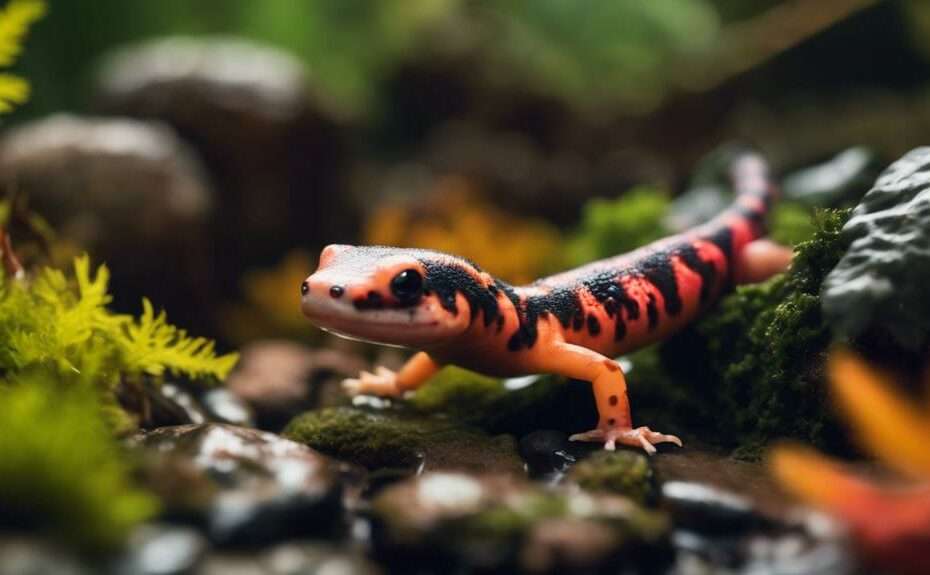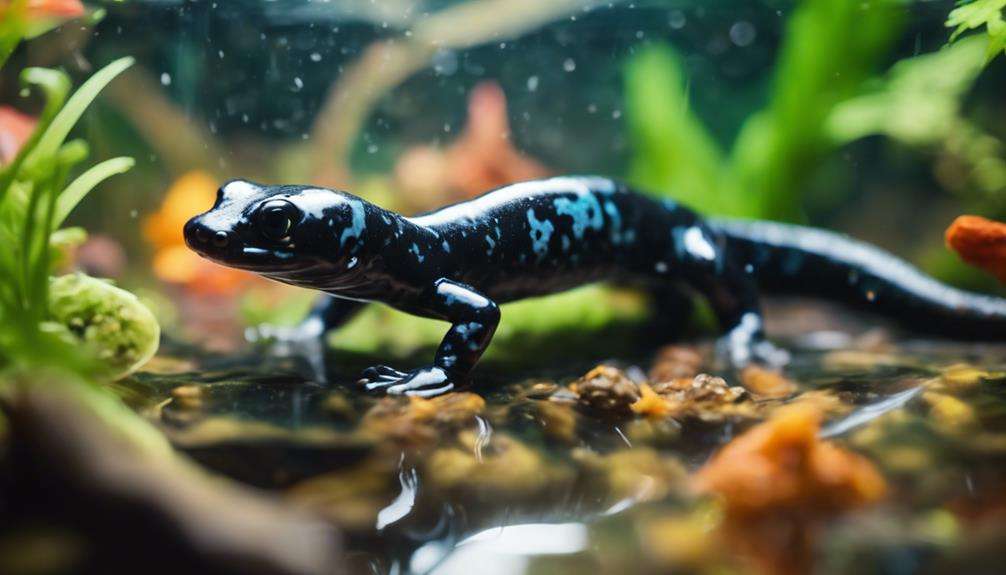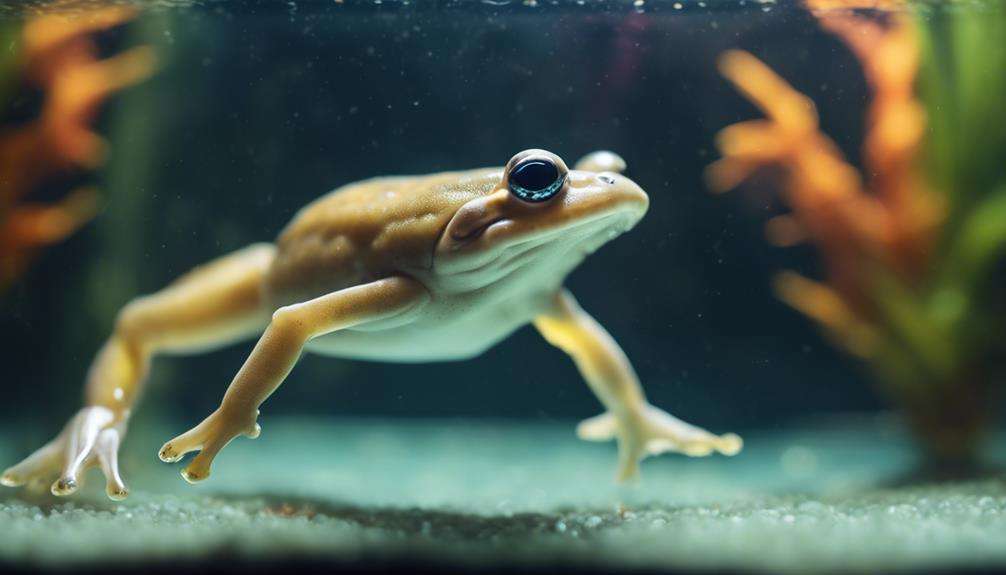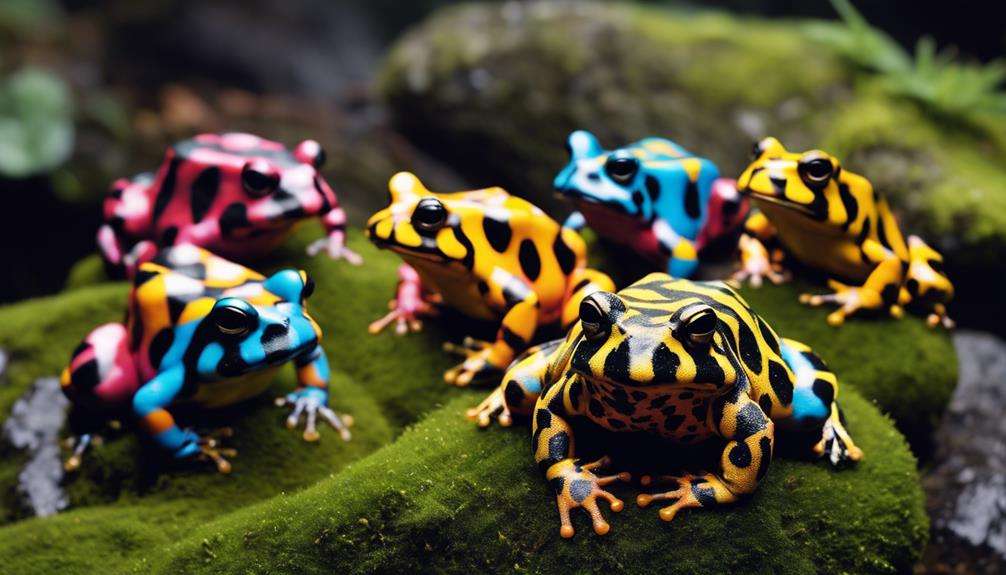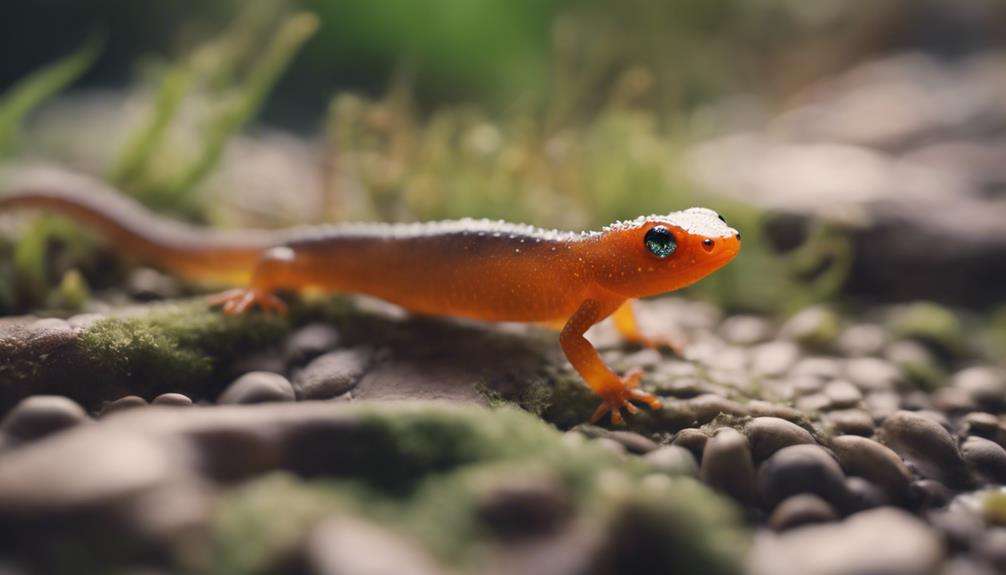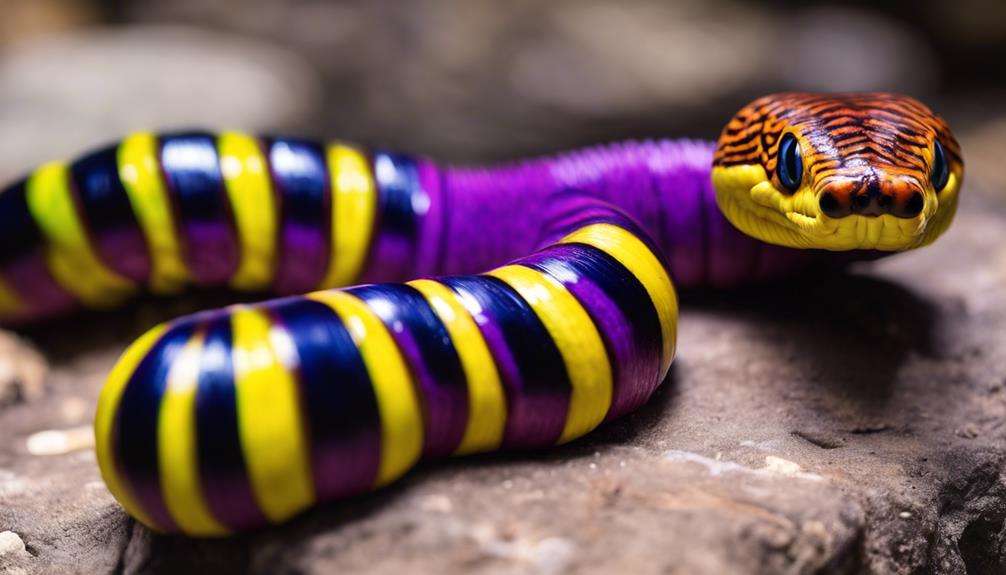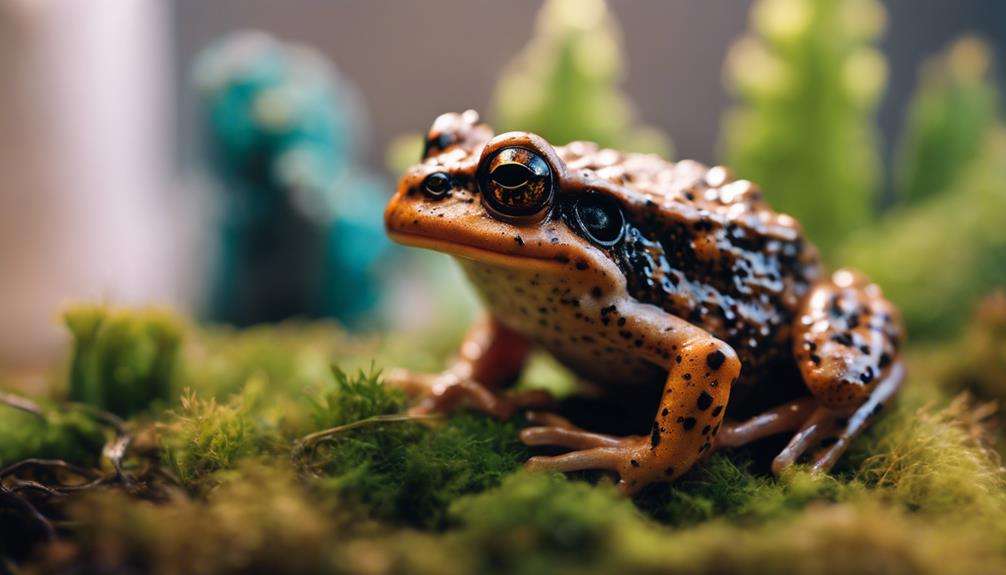If you're considering adding a salamander to your collection, did you know that there are over 700 different species found worldwide?
Among these, some stand out as excellent choices for hobbyists looking to care for these unique creatures. From the vibrant Eastern Newt to the striking Fire Belly Newt, each species offers its charm and specific care requirements.
Exploring the world of these captivating amphibians can be a rewarding experience for enthusiasts at any level of expertise.
Key Takeaways
- Choose salamanders based on size, habitat, and care requirements.
- Provide suitable environments with hiding spots and proper humidity levels.
- Feed a varied diet with nutritional supplements for optimal health.
- Regular health checks and minimal handling promote well-being and longevity.
Eastern Newt
The Eastern Newt, also known as Notophthalmus viridescens, is a fascinating amphibian species highly suitable for hobbyists due to its manageable size and captivating life stages. With an average size of 4-5 inches, Eastern Newts are well-suited for pet owners looking for a creature that isn't too large to handle.
These creatures undergo distinct life stages, starting as aquatic larvae, then transitioning to terrestrial young before becoming mostly aquatic adults. Eastern Newts exhibit regional varieties, each with unique colorations and markings, adding to their allure for hobbyists.
Observing their behaviors can be a rewarding experience for pet owners, as these newts display intriguing habits that are both entertaining and educational. Whether it's watching them swim gracefully as larvae or exploring their terrestrial surroundings as adults, Eastern Newts offer a dynamic and engaging pet-owning experience.
For those looking to delve into the world of amphibian care, the Eastern Newt is indeed an interesting choice.
Fire Belly Newt
Fire Belly Newts, scientifically known as Cynops pyrrhogaster, feature captivating orange or red bellies as a defense mechanism against predators due to their toxic skin secretions. These newts prefer semi-aquatic habitats with abundant vegetation to thrive, showcasing their social behavior when kept in appropriate group sizes within well-sized enclosures.
As a beginner-friendly species, Fire Belly Newts are cherished for their hardiness and relatively straightforward care requirements, making them an excellent choice for hobbyists looking to add a unique and colorful amphibian to their collection.
Unique Coloration Patterns
Displaying vibrant orange or red bellies, Fire Belly Newts showcase unique coloration patterns as a defense mechanism against predators. This aposematic coloration serves as a warning to predators, indicating the toxicity of these amphibians.
The striking contrast between their bright bellies and dark backs makes Fire Belly Newts visually appealing, especially in aquatic environments. The vibrant coloration acts as a visual deterrent, deterring potential threats in the wild.
These visually striking patterns have made Fire Belly Newts popular among hobbyists seeking captivating amphibian pets. The distinct coloration of Fire Belly Newts not only adds beauty to their appearance but also plays a crucial role in their survival by signaling danger to predators.
Care Requirements and Tips
With a focus on the proper care and maintenance of Fire Belly Newts, ensuring their longevity and well-being is essential for hobbyists. These small-sized newts, originating from Japan, are ideal for those with limited space. Their semi-aquatic nature means they thrive in environments with lush vegetation.
Fire Belly Newts boast a long lifespan of up to 25 years, making them a long-term commitment. Their striking orange and black bellies signal their toxic skin secretions, a defense mechanism against predators. Thankfully, they're easy to care for, requiring clean water, moderate temperatures, and a varied diet consisting of insects and small aquatic creatures.
Providing a habitat with ample hiding spots and maintaining water quality are crucial for the well-being of these captivating amphibians.
Fire Salamander
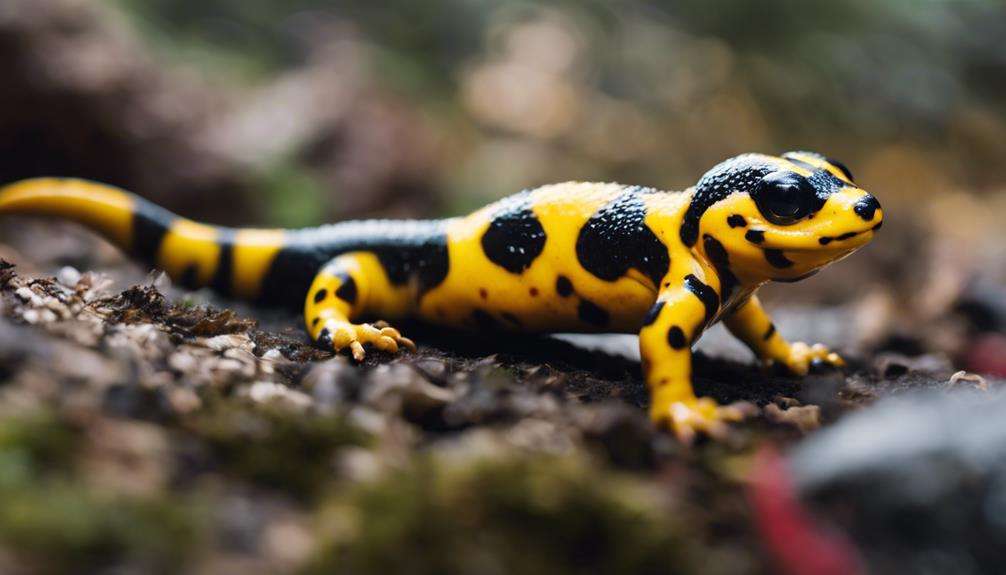
One of the most distinctive features of the Fire Salamander is its striking dark skin adorned with contrasting yellow or orange markings. These captivating creatures can grow to sizes of 6-12 inches and have a lifespan of up to 10 years when well cared for in captivity.
Here are some key points to consider if you're thinking about adding Fire Salamanders to your amphibian collection:
- Habitat: Fire Salamanders aren't burrowers, preferring moist substrate environments that mimic their natural habitat. Ensure their enclosure has ample hiding spots and a shallow water dish for hydration.
- Diet: Their diet primarily consists of night crawlers, although offering cut-up worms can provide dietary variety and enrichment. It's essential to provide appropriately sized prey items to prevent feeding-related injuries.
- Maintenance: Regularly monitor the temperature and humidity levels in their enclosure to maintain optimal conditions for Fire Salamanders' health and well-being. Clean their habitat as needed to prevent bacterial or fungal growth.
Marbled Salamander
The Marbled Salamander, known for its chunky body and distinctive black coloration with white or grayish bars and stripes, is a captivating species for hobbyists seeking a unique amphibian addition.
These medium-sized salamanders, with their underground lifestyle as avid burrowers, make intriguing pets for enthusiasts. Their black bodies adorned with contrasting white or grayish markings give them a striking appearance, earning them the nickname 'mole salamanders' due to their burrowing behaviors.
Marbled Salamanders grow up to 5 inches in length, making them a manageable size for hobbyists looking for an engaging yet not overly large pet. Their preference for spending most of their time hidden underground adds an element of mystery to their care and observation.
If you're drawn to the allure of owning a unique and visually appealing salamander species that exhibits fascinating burrowing habits, the Marbled Salamander may be the perfect choice for you.
Tiger Salamander
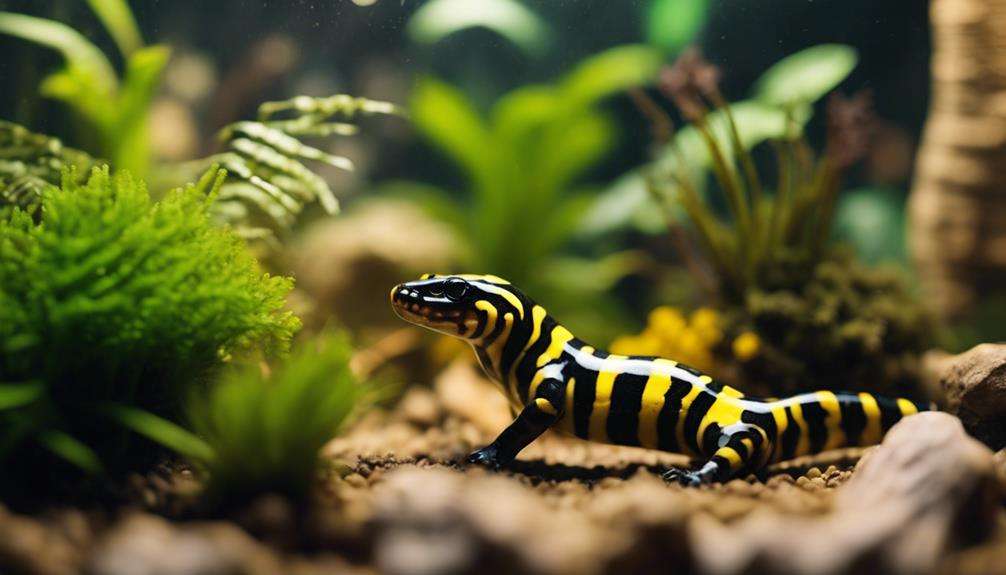
Tiger Salamanders, known for their impressive size reaching up to 14 inches, are a popular choice among hobbyists due to their interactive nature and availability in the pet trade. These large salamanders are captivating creatures to keep as pets for various reasons:
- Captive Bred: Tiger salamanders are usually captive-bred, ensuring they're healthier and more adaptable to captive environments.
- Healthy Appetites: These salamanders have voracious appetites and will readily consume a variety of food items, making them relatively easy to feed.
- Interactive Pets: Tiger salamanders are the least secretive of all salamander species and highly interactive. They can even be trained to accept food directly from their owners' hands, providing an engaging and rewarding experience.
Their size, availability, interactive behavior, and trainability make Tiger Salamanders a popular choice among hobbyists looking for a captivating and interactive pet to care for.
Axolotl
Originating from Mexico, the axolotl is a unique type of salamander known for retaining its larval characteristics into adulthood. These amphibians, with their Mexican origin, can live for an average of 10-15 years, reaching sizes of 15-17 inches.
Axolotls thrive in cool temperatures and hard water conditions, making them well-suited for hobbyists who can provide the appropriate habitat. Ensuring a diet of worms and insects is crucial for their health and vitality. Axolotls, with their captivating appearance and intriguing behaviors, make for fascinating aquatic pets that can delight hobbyists.
From their external gills to their ability to regenerate lost limbs, axolotls exhibit remarkable features that set them apart from other salamander species. If you're looking to care for a species that offers a blend of uniqueness and charm, axolotls could be the perfect addition to your collection of aquatic pets.
California Newt
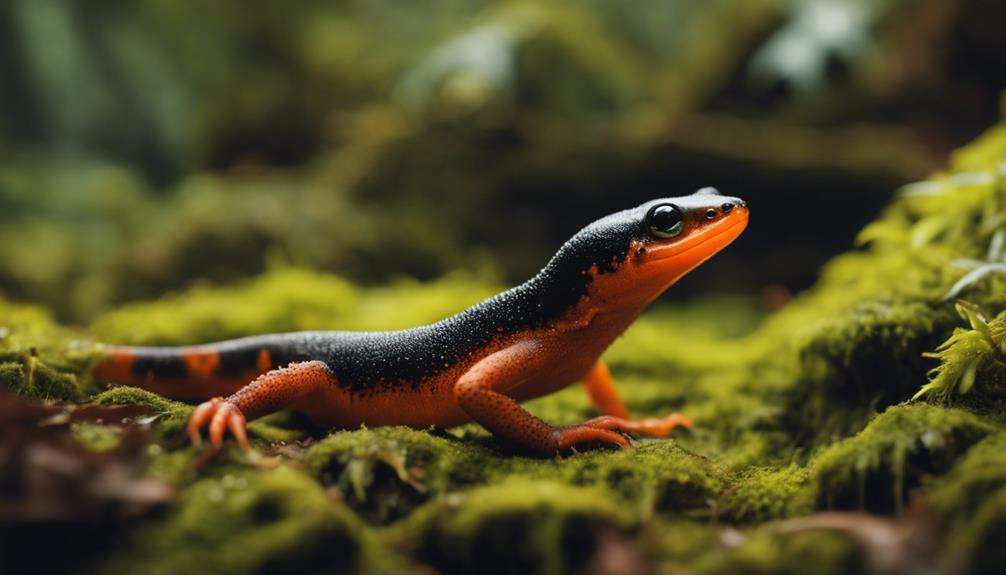
With their vibrant orange and yellow colors and preference for semi-aquatic environments, the California Newt (Taricha torosa) stands out as a visually appealing and captivating amphibian species for beginner hobbyists.
Here are some key points to consider about the California Newt:
- Hardiness and Adaptability: The California Newt is known for its robust nature and ability to adapt to various conditions, making it a suitable choice for novice keepers looking for a resilient pet.
- Size and Visual Appeal: Growing up to 6-8 inches in length, these newts are larger than some other species, adding to their visual appeal. Their vibrant orange and yellow hues make them a striking addition to any terrarium.
- Habitat Requirements: California Newts thrive in semi-aquatic setups with lush vegetation. It's essential to provide a habitat that offers a mix of land and water to meet their needs adequately.
Ensuring a suitable environment and providing proper care can make keeping California Newts a fascinating and rewarding experience for hobbyists interested in these captivating amphibians.
Frequently Asked Questions
What Is the Best Salamander to Have as a Pet?
For a pet salamander, consider your lifestyle, habitat setup, and personal preferences to decide between newts and salamanders. Research their specific needs, feeding schedules, handling precautions, health concerns, enclosure designs, substrates, temperature requirements, escape prevention, and interactions with other pets.
What Is the Easiest Salamander to Take Care Of?
You'll find that Eastern Newts are the easiest salamanders to take care of. With an impressive lifespan of 12-15 years, these adaptable creatures require basic habitat setups and enjoy a varied diet.
What Is the Easiest Salamander to Breed?
Breeding tiger salamanders is relatively easy due to their hardiness and short breeding cycle. Providing proper environmental conditions is crucial. They lay eggs in water, and successful breeding can aid in conservation efforts.
Can a Salamander Live in a 10 Gallon Tank?
In a 10-gallon tank, a salamander can thrive with proper substrate, hiding spots, and water quality. Monitor temperature, humidity, and cleanliness for a healthy environment. Ensure space for movement and exploration for optimal well-being.
Conclusion
In conclusion, exploring the diverse world of salamanders can be a rewarding experience for hobbyists. From the Eastern Newt to the Fire Salamander, each species offers unique qualities and care requirements.
Delve into the depths of these fascinating creatures to discover the delights of diversity and detail.
Dive into the dynamic domain of salamanders and delight in their diversity.
